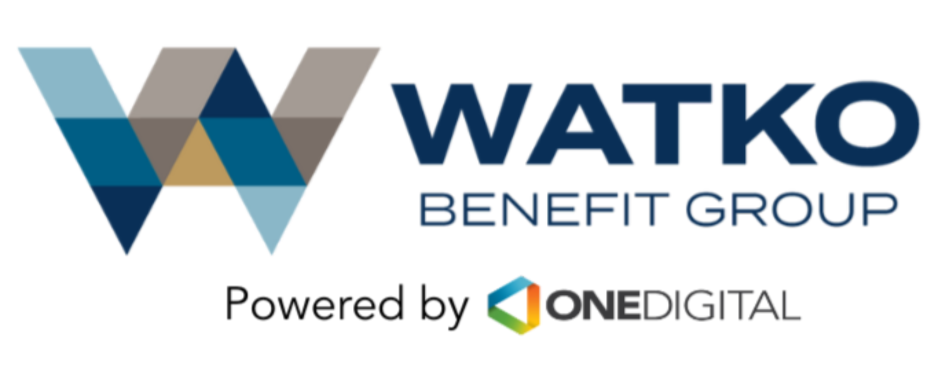November 03, 2021, 9:33 a.m. EDT
By Amanda Schiavo (ebn)
Do your employees understand their benefits?
Plenty of employers may respond with a confident, “Yes, of course!” After all, every year during the open enrollment period, employers provide their workers with ample information about benefits offerings, allowing them to select the support they most need.
But we all know the reality of those presentations: the information is overwhelming and full of jargon, and the selection process becomes a task that most workers just want to check off their to-do list. In reality, 93% of employees pick the same benefits each year rather than choosing new options, according to Aflac’s 2020-2021 Workforces report.
Of course, like everything else about the way we work, the pandemic has changed workers’ relationship with their benefits plans, and they’re now craving a deeper understanding of exactly how their employer’s offerings will support their health and wellness and that of their families.
During 2020’s open enrollment period, 56% of employees spent more time reviewing benefits offered by their employer than in previous years, according to a consumer survey from Voya Financial. But 35% of those surveyed admitted that they didn’t fully understand the benefits they were signing up for.
The solution may be to stop thinking of open enrollment as a once-a-year event. Sure, employee elections will still need to be made annually, but conversations about benefits should happen continuously within the workplace. It’s a shift in communication and education that’s gained steam in the past 18 months.
“The quantity of things that employees have to try to absorb is a lot to ask of people who are juggling work and family situations,” says Rob Grubka, CEO of Health Solutions at Voya Financial. “Like most things that you do once a year, it’s hard for people to accumulate enough learning during open enrollment. The move to a more persistent, consistent approach to providing education is a shift we’ve seen from COVID.”
The forced shift to remote work was an undeniable silver lining of the pandemic. Workers across industries quickly got comfortable relying on technology to get work done, and productivity even spiked as a result — trends that in an ideal world will stick around much longer than COVID-19. Open enrollment is poised for the same tech-driven revolution, says Karen Frost, VP of health strategy and solutions at Alight Solutions.
“Netflix prompts me about movies I might like and Amazon prompts me about things I might be interested in shopping for,” she says. “Employers can leverage the kind of data they know about people to promote programs that personalize the enrollment experience. Wouldn’t it be great if your employer prompted you — because they knew you have a child under the age of 13 — to take advantage of a dependent care spending account?”
Many employers are already utilizing artificial intelligence to target messages to the right individuals at the right time, Frost says. “Looking internally at capabilities is a great, cost-effective way to leverage AI for HR and benefits, including enrollment,” she says. “Increasingly, benefits administration and HR platforms provide employee portal experiences that include personalized plan content, reminders and personalized enrollment experiences with embedded decision support.”
But when it comes to technology, simplicity works, too, says Grubka. “Employees generally are most receptive to digital interactions, especially when it comes to receiving information from insurance carriers,” he says. “These tools do not have to be overly complex — almost two-thirds of employees say educational videos are important resources in making benefits decisions.”
As an adviser and VP at Segal Benz, the communications practice of benefits consulting firm Segal, Catherine Hamrick had long relied on benefits fairs to provide guidance to employees before they made their selections. Translating those in-person gatherings to the virtual world, she says, has created additional access to valuable resources.
“In-person benefits fairs were popular because employers and employees could get answers to their questions in a single place where you would have all your different vendors present,” she says. “During COVID, introducing these virtual fairs made it as easy as possible for our clients and for the vendors.”
Segal set up vendor toolkits that included all of the information needed and allowed the vendors to create their own short videos explaining their product; she also helped vendors set up live webinars and Q&A sessions, all of which were recorded for easy employee access.
“When people were doing in-person benefits fairs they sometimes would want to invite their spouse, significant other, or whoever in their family is helping them make these benefits decisions,” Hamrick says. “But a lot of employers didn’t allow that. Now, these virtual fairs make it easy for employees to share information with the other people in their families.”
That makes life easier (and more efficient) for employers, too, Hamrick says. “Most of our clients who went virtual are going to do it again, and have realized how great it is to have benefits education available year-round,” she says. “Information is evergreen and is available for new hires. We were somewhat surprised by the real advantages created by going virtual.”
Two years ago, Krispy Kreme signed on to partner with Segal Benz in hopes of improving the corporation’s benefits communications. Since, plan headcount has jumped by 15% — and employees have made better, more personalized decisions.
“Historically, Krispy Kremers would say they wanted to enroll in ‘the best plan,’” says Jackie Dawood, a senior analyst in the Total Rewards division of Krispy Kreme. “As benefits professionals, we know that there is no one plan better than the other, as each person’s needs are unique. Benefits communication has educated our organizations on our different plans in a way that was simple to understand.”
hose kinds of impactful conversations have become even more far-reaching since the events of 2020. Topics that were once considered taboo, like mental health and financial stress, have become accepted and even prioritized discussions within the workplace.
“The conversations about burnout, stress and emotional well-being started before COVID, and the heat on that has gotten turned up,” Hamrick says. “We are seeing more and more employers making sure that they’re communicating throughout the year about the resources they bring to help people with those sorts of things.”
Empowered employees will think more strategically about their benefits, ask tougher questions and make voluntary elections that will better serve and protect their families, says Sabrina LaFleur, lead certified financial planner at LearnLux, a financial wellness company.
“In the second quarter of 2020, we saw a spike in life insurance policy purchases as employees began thinking more realistically about how their families would survive if their income was lost due to a premature COVID related death,” she says. “Short-term disability claims for respiratory conditions more than doubled from February to March of 2020, so that led to an increased awareness of the need for income protection due to temporary or long-term disability.”
For LaFleur, these lessons are personal. Four months into the pandemic, she was diagnosed with double pneumonia and was unable to work for two weeks, followed by a recovery period of nearly six weeks.
“Working flexible hours from home allowed me to rest as much as I needed, but for anyone who does rigorous or manual labor, they would likely have needed to be excused from work several more weeks to safely recover,” she says. “And that’s exactly what something like disability insurance is for. It isn’t always one of the most popular benefits, but we saw an increased awareness of its value.”
Life insurance, a benefit with a similarly unsexy reputation, also saw a spike as a result of the pandemic, with 11% more policies sold in the first quarter of 2021 compared to the year prior, according to data from research firm LIMRA. Simultaneously, the average death benefit reduced by 4% to $270,000 — an indication that households with smaller incomes were largely responsible for those purchases.
With every step forward in helping employees understand their benefits, there’s more work to do, says Grubka. An increase in life insurance policies should signal to employers a need for education on group life insurance policies, which can be a simpler, more cost-effective solution for workers.
“Simply put, education and better guidance tools help prevent employees from overspending on their benefits,” he says. “Voya surveys have found that more than 73% of employees are interested in support and tools that help them understand how much money to put aside for retirement, emergency savings and healthcare expenses. One way we’re addressing this is by focusing on digital capabilities and resources.”
As the modern workforce continues to become more empowered and curious about the benefits available to them, employers who take a year-round approach to benefits education will not only better serve their existing staff, but better compete for top talent. According to Voya’s research, two-thirds of employees want better benefits education throughout the year — not just during open enrollment.
“One size does not fit all,” says Alight Solutions’ Frost. “As employers, think about your offerings and recognize that you have a group of people who really have diverse needs. Offering and detailing a variety of programs will really meet those needs — for both you as an employer and for your people.”




